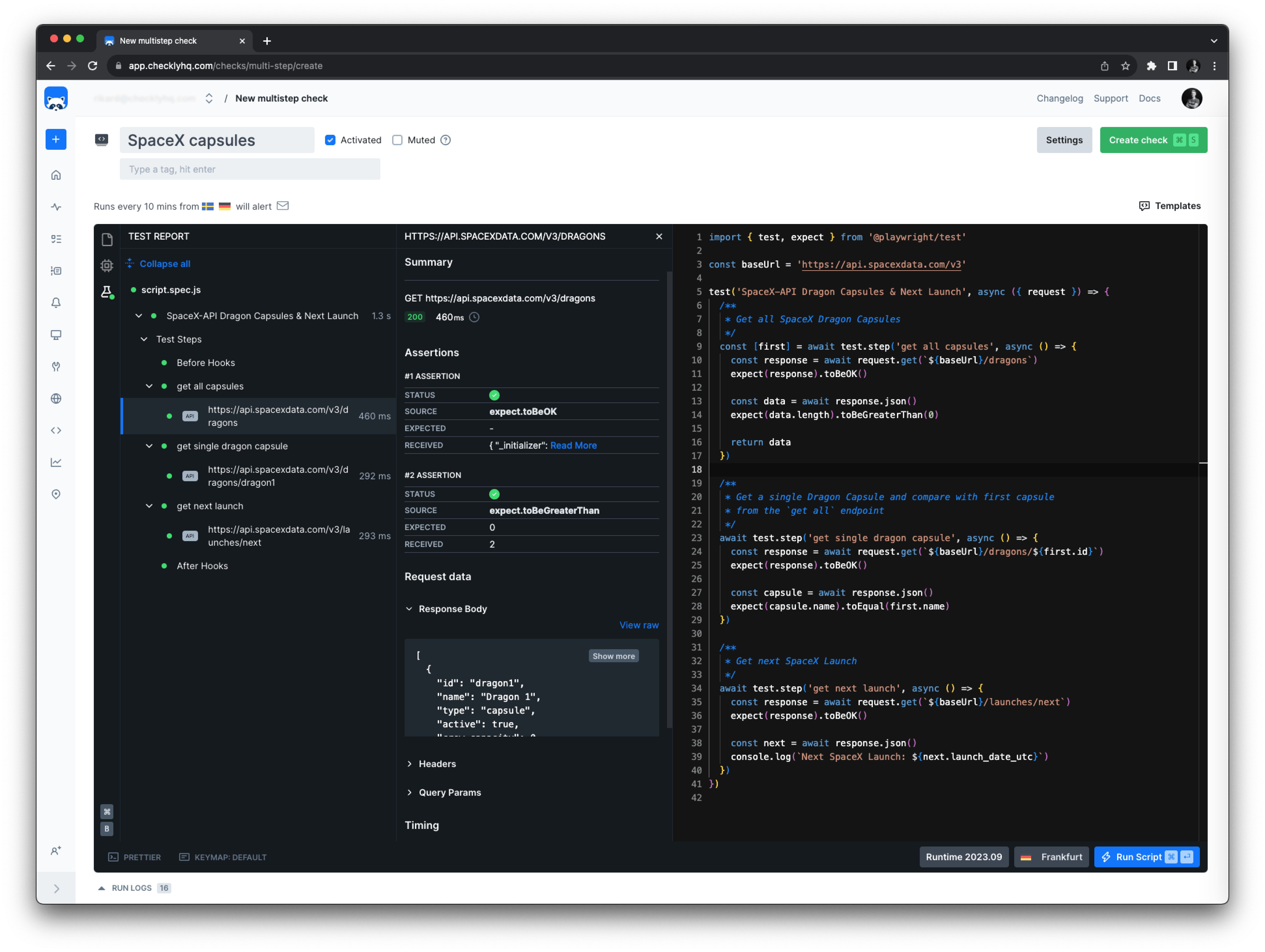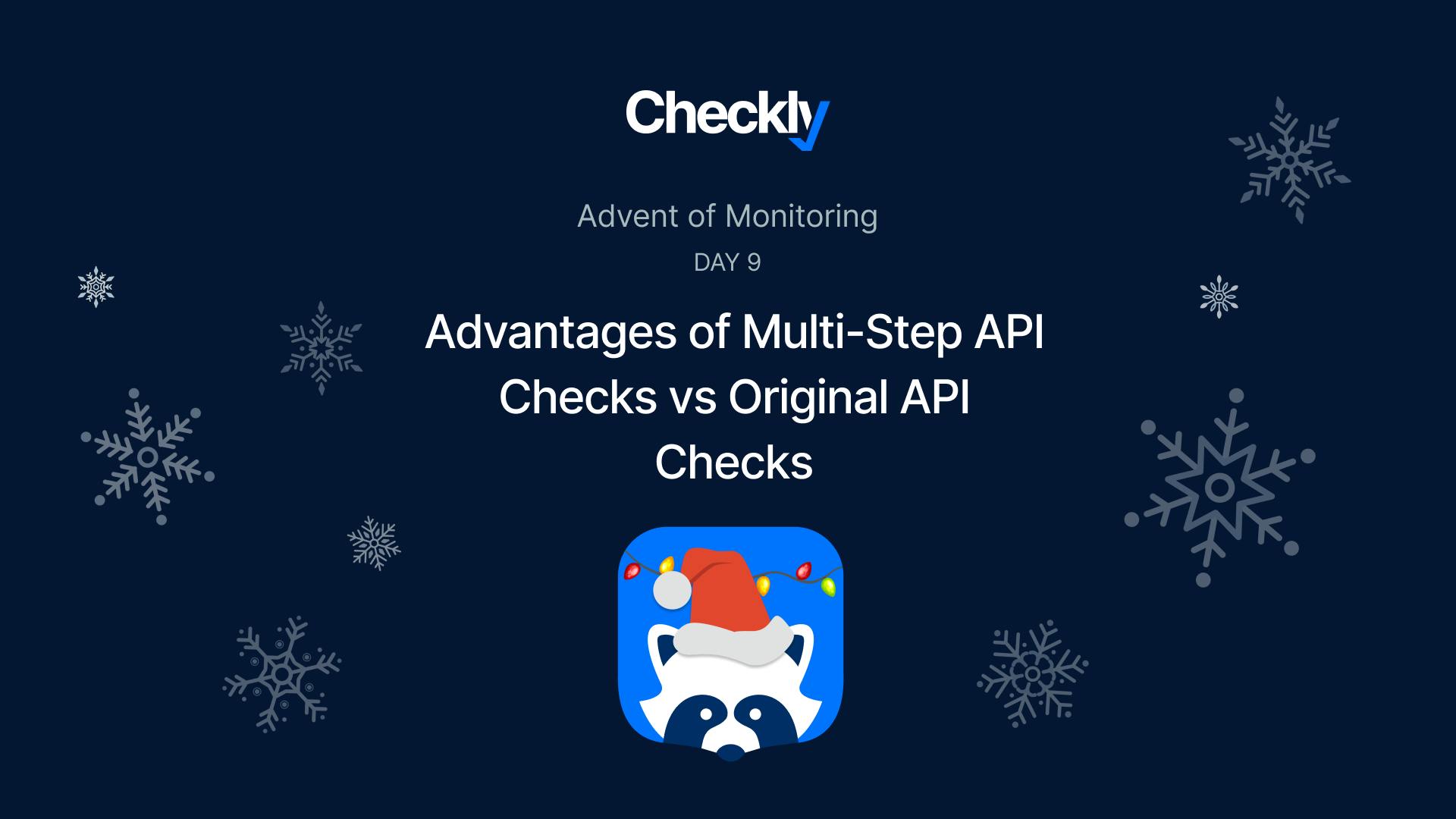This is the ninth part of our 12-day Advent of Monitoring series. In this series, Checkly's engineers will share practical monitoring tips from their own experience.
As a Checkly user, you’ve always had access to our two core check types: API and browser checks.
API Checks are much cheaper, and therefore only run a curl-like request against the endpoint of your choice. The browser check is more expensive but gives you full access to a programmable javascript environment and all of the power of playwright and playwright/test. Recently, we’ve launched a new check type that brings you the best of both worlds, the multi-step API check (beta).
The Benefits of Checkly’s Multi-Step API Checks

Affordability of Multi-Step Checks
One of the most significant advantages of Multi-Step Checks is their cost-effectiveness. Priced closer to API checks, they are a financially viable solution for many users who need to run checks frequently. This affordability does not compromise their functionality, as they offer a fully programmable Javascript environment and all of Playwright’s API testing capabilities, making them a highly cost-effective solution on the market.
Enhanced Functionality of Multi-Step Checks
Multi-step API checks provide a dynamic and more functional environment for users. They allow you to store values from one API request to another more easily. For example, if you need to fetch a dynamic value first and use it as input in a follow-up API request, multi-step API checks are exactly what you need. This feature makes them incredibly versatile and adaptable to various usage scenarios.
Working with Binary Files
In addition to their affordability and enhanced functionality, multi-step API checks also have the ability to work with binary files, such as images. This means that you can request an image, then use the node's built-in hashing functions to generate an MD5 hash and expect() that it matches the hash you’ve pre-calculated. This opens a whole new world of possibilities, allowing you to interact with your digital assets in ways you never thought possible.
Being able to string together multiple API requests with the added power of a fully programmable interface is a giant leap forward from our pre-existing API checks. We hope you enjoy them as much as we enjoyed building them and we can’t wait to see what you come up with!
For more information about multi-step API checks beta, please look at:

